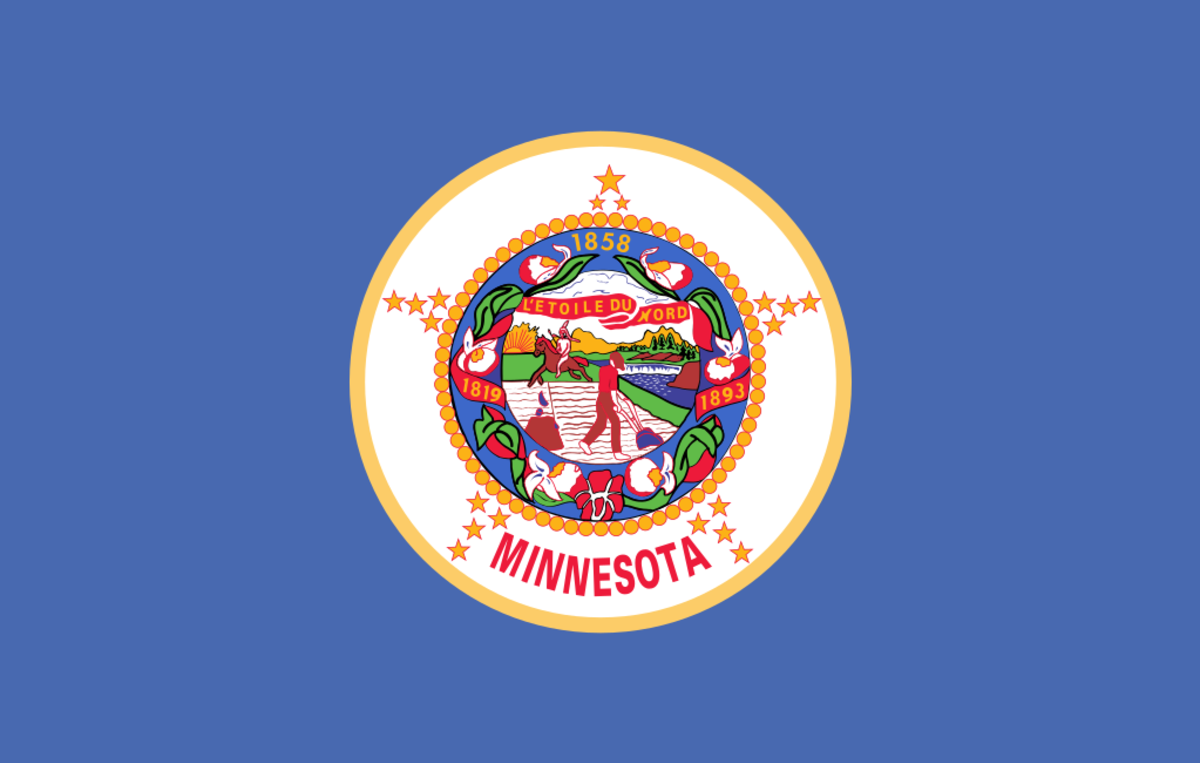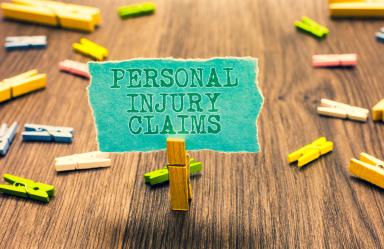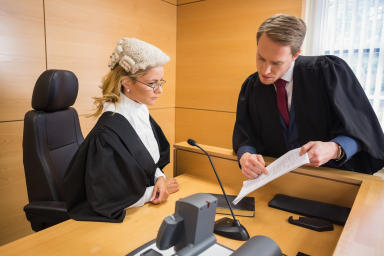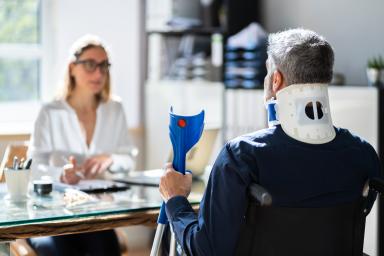Minnesota Personal Injury Laws

Accidents can occur anywhere in Minnesota — at home, on the road, or inside a building — and sometimes even if you take all reasonable precautions to keep yourself safe.
An ordinary car ride can turn into a tragedy if a reckless motorist crashes into your vehicle. A routine trip to the grocery store can land you in the emergency room if a wet floor causes you to slip and hit your head on the ground.
Now who is liable in these situations? Will the driver of the car that struck you and the owner of the store where you slipped pay your hospital bills? Can you sue them?
Minnesota personal injury laws address these questions about rights and liability if a person is injured because of someone else’s action or inaction.
To help you better understand this legal topic, this article will walk you through the key laws that govern Minnesota’s personal injury system.
Although there are many types of personal injury cases, the following sections will cover a few of the most common claims and rules that apply across The North Star State.
Minnesota Car Accident Laws
Annual traffic accidents in Minnesota are in the tens of thousands. In 2020 alone, there were 57,127 crashes recorded in the state. Nearly 400 people lost their lives and more than 20,500 sustained injuries in those accidents.
What steps must car accident victims take so they can manage their medical expenses and other damages with as little stress as possible? Some of the actions that are frequently recommended for injured drivers or passengers are:
File a claim on no-fault insurance, or PIP.
File a third-party insurance claim or personal injury lawsuit against the at-fault driver.
No-Fault Insurance or PPI Claim
Protecting yourself from the financial costs of a motor vehicle accident or injury is primarily your responsibility. If you are a Minnesota resident or a nonresident driving within the state’s borders, you must have Personal Injury Protection, also called Basic Economic Loss Benefits, of at least $40,000, and automobile liability coverage. This is a requirement under the Minnesota No-Fault Automobile Insurance Act.
PIP pays for the following economic losses:
Medical bills;
Missed wages;
Household services cost;
Funeral expenses of $2,000 in the event of death.
Since Minnesota is a no-fault state for car insurance claims, you are entitled to PIP benefits even if you are the one responsible for the accident that led to your injuries. The Minnesota Department of Commerce lists the following requirements for no-fault insurance claims:
Application for benefits;
Proof of expenses;
Medical test, if required.
However, under a no-fault arrangement, the crash victim is not compensated for non-economic damages.
Third-Party Insurance Claim or Personal Injury Lawsuit
Insurance policies have contractual limits on how much the insured can receive per accident. If your expenses are greater than what your PIP insurer agreed to cover, then your next step is to file a claim against the other driver’s liability coverage.
In a third-party insurance claim, it is critical to establish that the accident was the other driver’s fault. If there is no evidence of the other driver’s liability, then bills outside of your PIP limit will be your responsibility alone as out-of-pocket expenses.
You also have the option to take the matter to court if the other driver’s insurance company denies your claim or makes an offer that is way below the amount that you deserve. This means going outside of the no-fault system, in which case your suit is subject to the following rules to proceed:
Your medical expenses due to the accident must have exceeded $4,000;
You must have suffered permanent disfigurement, permanent injury, or disability that lasted at least 60 days.
Furthermore, you, as the plaintiff, must prove in court the following elements to hold the other driver accountable:
Driver’s duty of care to the defendant: This element is the easiest to establish because Minnesota law requires drivers to use the road safely and responsibly.
Violation of duty: You must present evidence that the other driver acted carelessly. Examples of negligent driving include speeding or driving too slowly, running a red light, and turning without signals.
Cause of injury or damages: Your case rests on the relationship between the defendant’s breach of duty and the harm you suffered. Unless you can prove that the breach was the cause of your injury, you have no basis for obtaining compensation.
Damages: Expenses and other losses due to your injuries are important to document. Your claim must include an estimate of these costs, which you may recover if you successfully prove in court all the above-mentioned elements of negligence.
If your claim is successful, you can receive compensation for non-economic damages like pain and suffering and, potentially, punitive damages on top of economic damages.
Minnesota Slip-and-Fall Accident Laws
Breaching a duty of care makes someone liable for the damages that the breach will cause. This legal principle is applicable not only to car accidents but also to injuries due to unsafe premises.
If a person slips, trips, or falls on someone else’s property, the owner or manager will be responsible for the costs and losses associated with the accident if they are found negligent in maintaining their property. This case falls within the area of personal injury law known as premises liability.
Minnesota law places a duty on the owner or manager of a property to keep it in a safe condition to protect visitors from accidents. They must ensure that there are no hazards on the property that can cause someone to slip and fall, such as wet floors, uneven steps or sidewalks, loose carpeting, and exposed wiring.
If it is not immediately possible to remove or remedy the unsafe condition, the property owner or manager must at least warn individuals about the danger. Failure to fix the defect or alert others to it can give rise to slip-and-fall claims.
Slip-and-fall accidents can happen in diverse types of locations, including supermarkets, parking lots, driveways, and sidewalks. They can cause minor to severe injuries, such as:
Knee damage;
Broken bones;
Sprained wrists or ankles;
Disfigurement;
Spinal cord injury;
Traumatic brain injury.
How can you receive compensation if you sustain injuries in a slip-and-fall accident? You have the following options:
If the property owner carries general liability insurance that has a medical payments provision, it will cover your medical fees. Although general liability insurance is not mandatory in Minnesota, many businesses opt for it to protect themselves from personal injury claims.
You can use your own health insurance coverage to pay for your medical expenses if the establishment where you slipped and fell has no general liability insurance or if the limit of the policy has been reached.
You can file a claim against the other party's homeowners' insurance to get reimbursed for the cost of your treatment if the policy contains a medical payments provision.
If your slip-and-fall claim ends up in court, the challenge is to prove that the property owner failed to take reasonable steps to keep the place hazard-free. You must also overcome common defenses that property owners use to avoid or minimize their liability. These include the following arguments:
You were distracted (e.g., using the phone) at the time of the accident;
You were in an area of the property that was usually off-limits to customers or visitors;
The threat or hazard should have been obvious to you;
There was signage or markers at the location to warn visitors about the dangerous conditions;
The footwear you were wearing was unsafe in the first place, given the conditions at the time of the accident.
To counter these arguments, it is recommended that you consult with an experienced personal injury lawyer. A legal professional who is well-versed in premises liability laws can support and protect your slip-and-fall claim.
Minnesota Dog Bite Laws
Like slips and falls, dog bites and animal attacks are common causes of premises liability actions in Minnesota.
While in some states the law protects dog owners, in Minnesota it protects victims of dog bites. The difference in treatment is due to the “one bite” versus “strict liability” rules.
One-Bite Rule
Minnesota’s neighbors, North Dakota and South Dakota, follow the one-bite rule. Here, dog owners are essentially protected from dog bite claims unless they know their pets are dangerous.
In other words, what determines liability in most cases is whether the owner of a dog that attacks someone knows or reasonably should know that their dog is harmful. If the answer is yes, then the owner may be held responsible for any injury that their dog causes.
Strict Liability Rule
Minnesota does not adhere to “one bite” but to the strict liability rule for dog bite cases.
If a dog attacks or bites someone, the owner is liable for injuries, regardless of whether they had any idea that their dog would act violently, attack, or bite.
Thus, Minnesota does not give weight to the fact that the dog had no prior history of aggression, nor does it require that the victim establish negligence on the part of the dog owner.
Instead, strict liability is enforced in accordance with Section 347.22 of the Minnesota Statutes. This law lays down the conditions that must be met to hold a dog owner liable for injuries caused by their pet, which are as follows:
The victim was lawfully in the place, whether on public or private property, where the dog attack occurred;
The victim was “acting peaceably;”
The victim did not provoke the dog.
Note that the law uses the term “owner” broadly, meaning it includes any person who keeps or harbors the attacking dog. Thus, custodians, including dog walkers and veterinarians, are strictly liable for damages under the Minnesota dog bite law.
Furthermore, the law covers not only bite injuries but also the following:
Injuries caused by a dog jumping on a person;
Injuries sustained from being knocked down by a dog;
Post-traumatic stress disorder due to the attack.
If you suffer any of the above-mentioned injuries, you are entitled to pursue compensation for damages as long as you can prove the conditions set by Minnesota’s dog bite law.
This also means that you must defeat potential arguments by the defense, including the following:
The injured person provoked the dog;
The injured person was in the place unlawfully; in other words, he or she was trespassing;
The injured person consented to take care of the dog, accepting the risk of attack or bite.
Negligence
While Minnesota dog bite victims may recover damages without having to prove that the animal’s owner was negligent, the law allows lawsuits for dog bites based on the owner's fault. This means that the plaintiff must prove the elements of the one-bite rule: that the owner knew their dog was dangerous but did not use reasonable care to keep the animal under control.
Minnesota Shared-Fault Rule
In most personal injury cases, negligence is a requirement to recover damages. It is possible that, in a single accident, two or more parties are at fault. This is where the shared-fault rule comes into play.
Minnesota follows the comparative negligence rule. The court determines a party’s degree of fault in an accident, and whatever the result is, it will have an impact on the amount of money that they will receive.
The following example illustrates the effect of Minnesota’s shared-fault rule on compensation awards: if a victim’s total damages are $100,000 and their fault in an accident is 15%, they will only get 85% of the award, or $85,000.
However, if the court determines that the plaintiff is 50% or more at fault, they will not get anything at all.
Determining an individual’s percentage of responsibility for an accident is a complicated aspect of personal injury lawsuits. This makes expert legal advice necessary to protect a victim’s rights and maximize the recovery of damages.
How Much Can One Sue for Personal Injury in Minnesota?
Recoverable damages in Minnesota personal injury cases are classified into economic damages and non-economic damages.
The most common economic damages are medical bills, property damage, and lost income. Non-economic damages include, but are not limited to, pain and suffering, loss of mobility, and physical mutilation.
Punitive damages are awarded if the defendant deliberately caused the injury or demonstrated “wanton and willful misconduct.”
Minnesota has no law that imposes a cap on personal injury compensation, but the average settlement is $30,000. A plaintiff can get more or less than this amount, depending on the details of the case, like the extent of the injuries or whether the plaintiff was partially at fault.
Minnesota Statute of Limitations for Personal Injury Cases
Minnesota imposes a deadline for the filing of personal injury lawsuits. According to Section 541.07 of the Minnesota Statutes, plaintiffs have two years from the date of the accident or injury to file a case. Failure to comply with the two-year statute of limitations will result in a case’s dismissal, so the injured loses their chance to recoup their damages. However, there are a few exceptions to this rule:
If the victim has a legal disability, the statute of limitations is tolled until the legal disability is removed. Minnesota law defines legal disability as being a minor or being mentally incapable of participating in a lawsuit.
If the defendant travels to another state after the accident or injury, the statute of limitations may be extended until they return to Minnesota.
The statute of limitations may only be a small detail in a personal injury case, but letting it pass without filing a lawsuit has its repercussions. A seasoned personal injury attorney can guide you through this procedural aspect of a case so that you do not forfeit your right to receive compensation for your injuries.
Legal Resources for Personal Injury Victims in Minnesota
Minnesota State Bar Association
The MSBA has been promoting professional excellence in the practice of law since its founding in 1889. Its online services include a Find a Lawyer page that Minnesotans needing legal assistance can use. The site lets users find the nearest attorney by practice area, language, and field of specialization. The Forms and Resources page provides links to a range of legal documents, from practice-specific forms to court forms. It also offers access to legal publications, such as the Bench & Bar of Minnesota, e-newsletters, e-books, and blogs. Court opinions are also shared on the site.
LawHelpMN.org
The site is managed by Legal Services State Support. Minnesotans who have legal problems but have insufficient resources to file or fight a lawsuit can look for help on this website. It connects residents with legal services and providers, offers users assistance in finding a lawyer in Minnesota, and educates the public on their legal rights and other topics involving the law. A particularly useful tool on the site is Find a Legal Kiosk. It lets users look for legal kiosks across Minnesota, which are computers that accept applications for free legal aid and allow video meetings and remote court hearings.
Minnesota State Law Library
The oldest library in Minnesota offers a collection of books about law and the theory of law. The site also contains library research guides for lawyers, legal researchers, and law students, including one that focuses on torts, or personal injury law. Additionally, it provides access to legal articles, statutes, court rules, and regulations and contains an extensive list of legal aid services throughout Minnesota.
Expertise.com StaffAuthor
Step into the world of Expertise.com, your go-to hub for credible insights. We don't take accuracy lightly around here. Our squad of expert reviewers, each a maestro in their field, has given the green light to every single article you'll find. From rigorous fact-checking to meticulous evaluations of service providers, we've got it all covered. So feel free to dive in and explore. The information you'll uncover has been stamped with the seal of approval by our top-notch experts.




